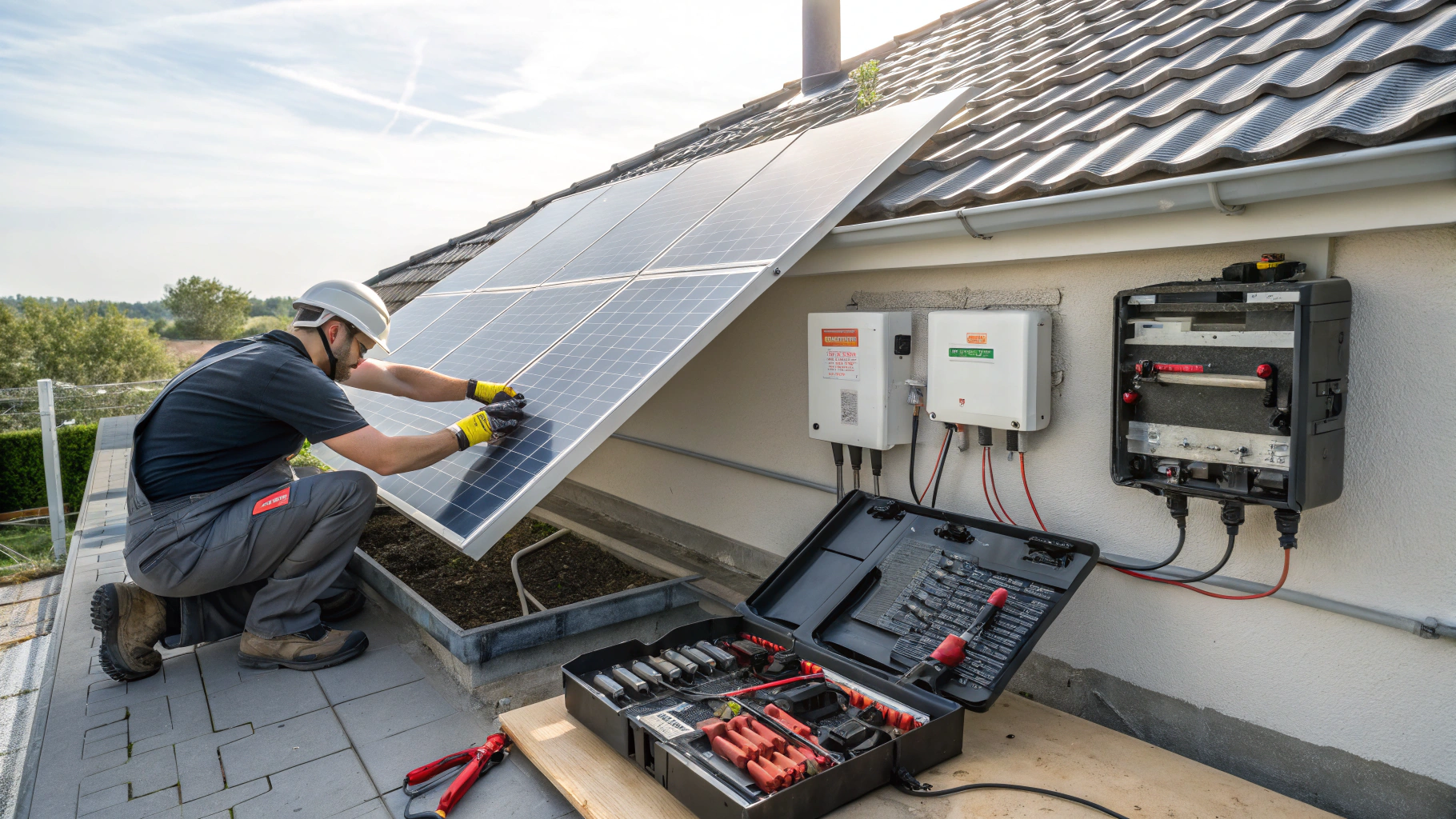
When I first made the decision to construct a solar power system, I found myself utterly bewildered, unsure of where to even begin. However, through diligent research and hands-on experimentation, I learned that setting up such a system was far less daunting than I had initially imagined. To build an efficient solar energy system, grasping the essential components and the precise procedures involved is paramount.
In my exploration, I discovered that a fundamental setup requires several key components: solar panels, a charge controller, an inverter, batteries, and a distribution system. Each of these elements works in concert to convert sunlight into electricity and store it in batteries for daily use.
To ensure your project flows seamlessly, the first step is to accurately assess your household’s electricity load, which will guide you in selecting appropriately sized batteries and solar panels to meet your energy demands. Subsequently, choosing a suitable charge controller and inverter is crucial to effectively manage and convert the electricity generated.
Safety should be your utmost priority during the construction and installation phases. Hence, it is essential to adhere strictly to installation guidelines, ensuring that each component is properly connected and thoroughly tested for safety. Additionally, installing a monitoring system can be instrumental in keeping tabs on your energy output.
Creating a solar power system demands meticulous planning and execution at every step, from selecting the right components to the installation process itself. I hope that by sharing my journey, I can empower you to tackle the assembly of your solar energy system with greater ease. Trust me, this venture is not only fascinating but also contributes positively to the environment. So, kickstart your green energy initiative today!
Installing a solar power system is an entirely easy task.False
Building a solar power system requires careful planning and effort.
Key components of a solar power system include solar panels and batteries.True
Solar panels, batteries, charge controllers, and inverters are essential.
What Are the Essential Components of a Solar Power System?
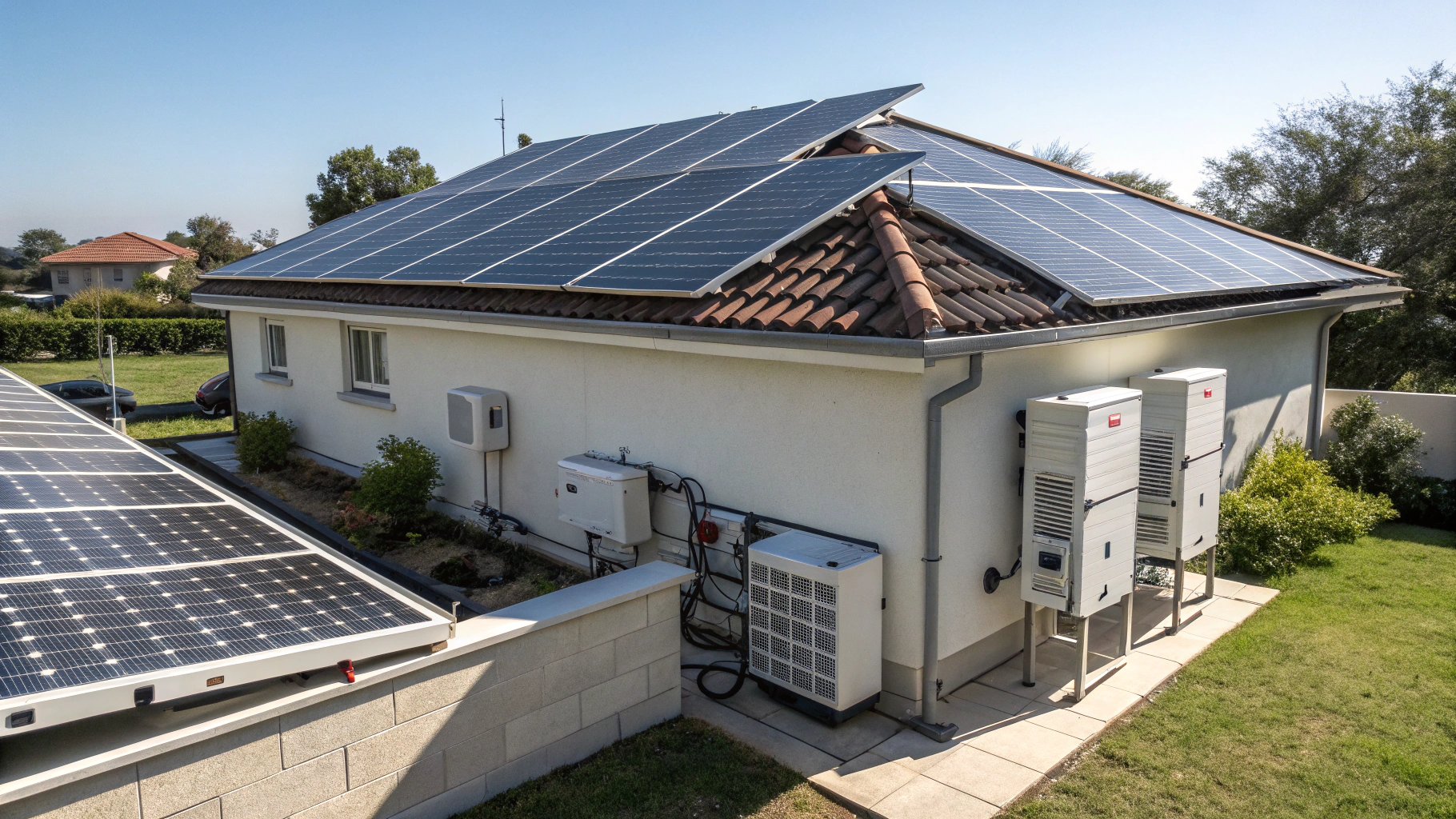
The moment I resolved to embark on the journey of constructing a solar power system for my home, an avalanche of complexity washed over me. The prospect of capturing the sun's energy felt simultaneously exhilarating and intimidating. Thus began my expedition into the essential elements that constitute a solar power system, and I’m eager to illuminate you with my insights.
At the heart of any solar power system lie the solar panels, those wondrous devices that ingeniously transform sunlight into usable electricity. I dedicated countless hours scouring the market for the ideal panels, ultimately gravitating towards monocrystalline options renowned for their superior efficiency. Following that, I tackled the racking and mounting equipment, ensuring my panels would brave any meteorological challenge Mother Nature might conjure. With the foundational elements secured, I delved into the realm of inverters. These pivotal devices work tirelessly to convert the direct current (DC) generated by the panels into the alternating current (AC) essential for household appliances. I opted for string inverters, strategically selected to optimize my system's performance.
Another eye-opening revelation was the inclusion of battery storage, granting me the opportunity to capture surplus energy for use during those sunless hours. Enumerating the safety and management components, I meticulously integrated elements like the disconnect switch and charge controllers, ensuring seamless and secure operation. With the wiring set in place, my solar power system was nearing completion. The pièce de résistance was the monitoring equipment, a technological gem that granted me invaluable insights into the performance and efficiency of my installation.
Establishing a solar power system transcends mere financial savings; it offers a profound sense of empowerment. Take that audacious first step, immerse yourself in the intricacies, and before long, you'll find yourself reveling in the sun's abundant energy, much like I do now. Embrace the adventure, and experience the transformative difference!
Key Elements of a Solar Power System Explained
Have you ever pondered the fundamental components of a solar power system? When I embarked on my journey to build one for my home, I discovered that solar panels, inverters, battery storage, and monitoring equipment are pivotal to harnessing and managing solar energy efficiently. Understanding these elements will empower you to make informed decisions on your renewable energy journey.
| Component | Description | Function |
|---|---|---|
| Solar Panels | Devices that convert sunlight into electricity | Generate usable power |
| Inverters | Convert DC electricity from panels to AC | Make power compatible with home devices |
| Battery Storage | Stores excess energy for use when the sun isn’t shining | Improves energy independence |
| Monitoring Equipment | Tracks system performance and efficiency | Allows for informed maintenance |
| Racking and Mounting | Structures to secure solar panels | Ensure durability against weather elements |
| Safety Components | Includes disconnect switches and charge controllers | Ensures safe operation of the system |
Solar panels generate electricity using wind energy instead of sunlight.False
This is false; solar panels specifically convert sunlight into electricity.
String inverters convert DC generated by solar panels into AC electricity.True
This is true; string inverters are crucial for converting solar DC to usable AC.
Solar Panels and Their Importance
Harnessing solar energy through photovoltaic panels has become paramount in our contemporary power paradigm. Grasping the significance of solar panels unveils their profound influence on our environmental fabric. Functioning as a sustainable energy source, they notably diminish our carbon emissions, thus underscoring the ecological advantages of solar technology. As the price of solar panels continues to plummet, the surge in solar panel adoption gains momentum. Furthermore, enhanced efficiency amplifies the advantages of solar energy, fostering greater household sustainability. Investing in solar innovation promises substantial economic benefits while nurturing a pristine, verdant tomorrow. Explore solar panel installation to champion this sustainable energy alternative.
Role of Charge Controllers
Within the domain of solar energy frameworks, the significance of charge controllers cannot be overstated. These intricate devices, especially solar charge controllers, are instrumental in prolonging battery longevity via adept energy regulation. The spectrum includes Pulse Width Modulation (PWM) controllers to the more advanced Maximum Power Point Tracking (MPPT) variants, each catering to specific requirements. Grasping the function of charge controllers elucidates their critical role in dynamic voltage modulation and energy retention strategies. They guarantee the smooth operation of renewable energy systems such as solar power. With seamless integration of inverters and battery charge controllers, one can appreciate the multifaceted benefits they provide, significantly enhancing the efficacy of battery management systems.
The Function of Inverters
Inverters play an instrumental role in transforming direct current (DC) into alternating current (AC), a process fundamental to contemporary energy innovations. Their functionality spans from residential use to vast industrial applications. Notably, solar inverter systems and grid-tied configurations exemplify key utilities. Various inverter types, including sine wave, square wave, and modified sine wave, each serve distinct purposes. A thorough comprehension of the operational principles and circuitry enhances overall efficiency. Remarkably, inverter technology fosters renewable energy proliferation, offering benefits such as reliability and energy optimization. Effective troubleshooting is crucial for sustaining peak performance over time.
How to Calculate Your Energy Load?
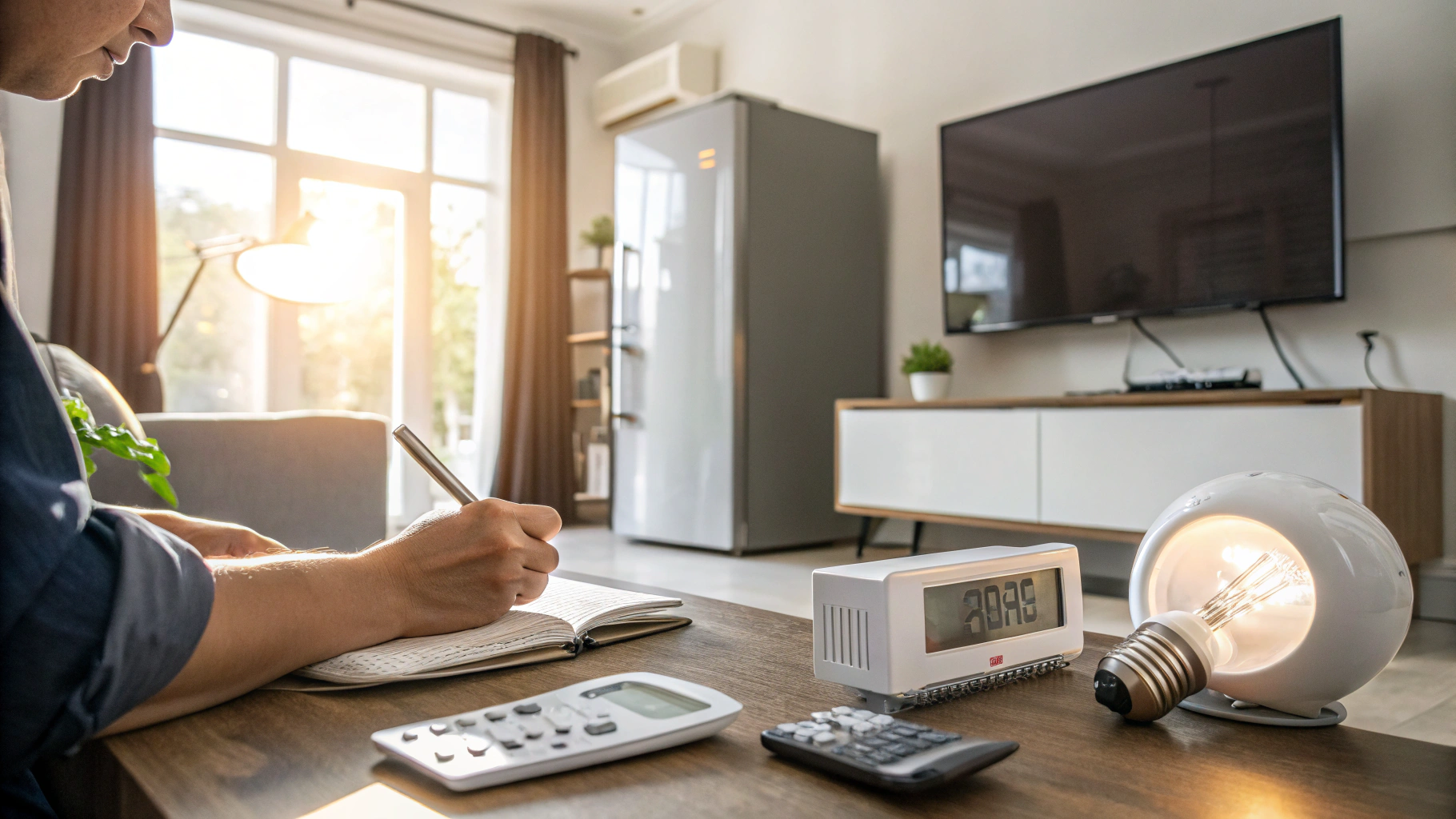
When I first embarked on the journey of building a solar power system, I found myself utterly bewildered. This intricate endeavor appeared to demand a wealth of technical expertise and meticulous calculations, particularly when it came to accurately assessing energy loads. However, as I delved deeper into the process, I began to recognize that it could actually be distilled into a series of manageable steps. My expedition commenced with cataloging all the electrical appliances in my household, after which I calculated the total wattage—this essential figure directly influenced the number of solar panels I would require.
I soon realized the significance of considering the operational hours of each device. For instance, I had a 60-watt light bulb that operated continuously for 24 hours each day, accumulating an impressive 1,440 watt-hours—far exceeding my initial expectations. Subsequently, by incorporating a diversity factor, I could accurately minimize the total power demand, as not all devices would be in use simultaneously. Ultimately, I applied a straightforward formula to determine the daily average energy load, transforming the seemingly daunting task of constructing a solar system into a tangible goal.
If you're curious about how to calculate your household's energy load to support a solar system, the key steps involve listing your devices, calculating total wattage, evaluating usage hours, applying a diversity factor, and finally computing the average energy load. I genuinely hope these steps can be as beneficial for you as they were for me. If you’re ready to take action and put these methods to the test, I'm confident you'll witness the results you desire!
Steps to Accurately Calculate Your Energy Load for Solar Power
Imagine standing at the beginning of your own solar energy journey, overwhelmed by the complexity of calculations. I know I was! However, I discovered that calculating energy load is not as daunting as it seems. The core steps include documenting your appliances, calculating their wattage, considering their operational hours, and applying a diversity factor. This methodical approach allows me to determine the average energy load effectively, paving the way for a successful solar system installation.
| Step | Description |
|---|---|
| 1. List Appliances | Catalog all electrical devices in your household. |
| 2. Calculate Total Wattage | Sum the wattage of all appliances to understand energy needs. |
| 3. Evaluate Usage Hours | Determine how long each device operates daily. |
| 4. Apply Diversity Factor | Adjust total wattage to account for simultaneous usage. |
| 5. Compute Average Energy Load | Use a formula to find the daily average energy requirement. |
Calculating energy loads for solar systems is entirely effortless.False
Calculating energy loads requires technical expertise and careful calculations.
Listing devices and calculating total wattage is essential for solar systems.True
An accurate assessment of wattage is crucial for determining solar panel needs.
Identifying Energy Consumption
Comprehending energy consumption is essential in our current era, propelled by the imperative to develop sustainable methodologies. By conducting energy audits, one reveals intricate patterns of usage that influence both the environment and finances. Delving into energy consumption statistics illuminates the myriad factors at play—whether in residential, commercial, or industrial spheres. Pursue energy efficiency zealously, while adopting conservation strategies to curtail usage. Implement energy-saving tactics and infuse renewable resources for enduring effects. Vigilantly monitoring usage not only promotes sustainable habits but also uncovers pivotal trends for future strategizing.
Calculating Total Energy Needs
Comprehending the entirety of one’s energy requirements is essential for achieving peak health. The calculation of these needs is multifaceted, incorporating factors like personal activity levels and basal metabolic rate. A daily energy needs calculator emerges as a beneficial resource for estimating caloric consumption. By employing the total energy expenditure formula, one can effectively account for daily activities. Furthermore, nutritional energy needs align with macronutrient demands, fostering a harmonious energy balance. Precise energy calculations are indispensable for sustaining a robust lifestyle, especially for adults aiming to manage their caloric intake efficiently.
Sizing Your Solar Power System
Determining the dimensions of a solar power system is a nuanced craft that intricately aligns energy requirements with output potential, thereby guaranteeing peak efficiency. To excel, leverage a solar size calculator and immerse yourself in a detailed solar panel sizing manual. By analyzing energy consumption trends, an optimal panel size can be attained. The intricacies of residential solar sizing necessitate meticulous calculations alongside a profound grasp of solar system architecture. Investigate performance determinants and employ tailored size suggestions for enhanced efficiency and sustainability. An exhaustive solar installation guide serves as your strategic navigational tool throughout this transformative journey.
What Is the Process for Choosing the Right Batteries?

When I first embarked on the journey of building a solar power system, the overwhelming sensation of confusion is a memory that lingers vividly in my mind. I distinctly recall the bewilderment I experienced while sifting through the myriad of choices available for batteries. The numerous types and capacities left me utterly disoriented, unsure of where to even begin. Today, however, I find it essential to share some pivotal insights I’ve gained throughout this process, with hopes that they might assist you in selecting the right battery types and sizes for your forthcoming solar project.
The first and arguably the most critical step is to gain a thorough understanding of your energy requirements. You must clearly delineate the voltage, capacity, and operational duration needed for your devices. This clarity will profoundly inform your decisions as you navigate the choices of battery types and their respective capacities. For instance, while lithium-ion batteries may come with a higher price tag, their extended charge-discharge cycles and longevity undeniably make them a smart investment for the long run.
During my quest to identify the optimal battery for my system, I came to realize that it wasn’t merely about evaluating the initial costs. A delicate balance between battery lifespan and ongoing maintenance expenses emerged as likewise crucial. Such considerations not only enhance the project’s economic viability but also lay the groundwork for the system’s dependable operation. As I deepened my understanding of safety and maintenance requirements, I learned that adhering to proper installation protocols and preemptively addressing deep discharges not only safeguarded my investment but also optimized the operational safety of the system.
Key Takeaway: To ensure success in constructing a solar power system, it's vital to understand your energy necessities, select the appropriate battery type, balance battery longevity with cost, and prioritize safety and maintenance measures.
With these experiences in mind, I am confident you, too, can build an efficient and cost-effective solar energy system. Should you have any queries or seek further advice, feel free to share your thoughts; I am more than willing to engage in a dialogue with you. I truly hope these suggestions serve you well in your project.
Choosing the Best Batteries for Your Solar Power System
Imagine standing in front of dozens of battery options, feeling lost and overwhelmed—this was me when I first decided to build a solar power system. Now, after navigating through the complexities, I understand that the first crucial step is to identify your energy requirements clearly. This ensures you select the right battery types and sizes that align with your project’s needs. By balancing costs, lifespan, and maintenance, you can not only safeguard your investment but also create a reliable energy system.
| Consideration | Description |
|---|---|
| Energy Requirements | Assess the voltage, capacity, and duration needed for your devices to guide battery selection. |
| Battery Types | Evaluate options such as lithium-ion for their longevity and cost-effectiveness over time. |
| Cost vs. Lifespan | Balance initial costs with long-term maintenance and lifespan to enhance economic viability. |
| Safety & Maintenance | Implement proper installation protocols and avoid deep discharges to protect your system. |
Understanding energy requirements isn’t important for battery selection.False
In reality, knowing your energy needs is crucial for selecting the right battery.
Lithium-ion batteries offer longevity and extended charge cycles.True
Lithium-ion batteries are valued for their durability and long-term performance.
Determining Storage Needs
Assessing storage necessities holds paramount importance for both individuals and enterprises. A thorough analysis of storage requirements unveils crucial factors influencing capacity demands. Utilizing a space calculator can significantly enhance optimization of available areas. Explore varied storage alternatives—ranging from mobile units to inventory management systems—tailored to personal and commercial objectives. Grasping storage planning's best practices paves the way for economical solutions. Ultimately, an exhaustive needs assessment, combined with a meticulous planning framework, streamlines capacity determination and facilitates the evaluation of ideal warehousing spaces.
Selecting Battery Capacity
Selecting the ideal battery capacity is crucial for maximizing device functionality. An intricate battery capacity guide serves as a compass in pinpointing specific energy requirements for unique applications. Several elements, including device usage patterns, power specifications, and ambient conditions, significantly influence the selection process. Harnessing a battery capacity calculator enables a more precise determination of needed capacity. To make informed choices, reflect on capacity-related aspects, utilize a sizing guide, and ensure alignment with everyday operational necessities. By committing to the optimal battery size, users can enhance both longevity and operational efficiency.
Matching Batteries with System Requirements
Choosing the appropriate battery stands as a critical factor in energy storage systems. To appreciate battery compatibility with particular power demands, one must scrutinize specifications, including voltage requisites and chemical compatibilities. The art of battery alignment involves harmonizing battery varieties with system prerequisites, spotlighting the importance of judicious selection. Whether delving into the intricacies of lead-acid or lithium options, each presents distinctive advantages and hurdles. Considerations such as sizing, lifecycle durability, and rigorous testing for specifications are essential for optimal performance. Ultimately, a meticulous approach to rechargeable systems and detailed performance metrics ensures seamless integration.
How to Select Appropriate Solar Panels?
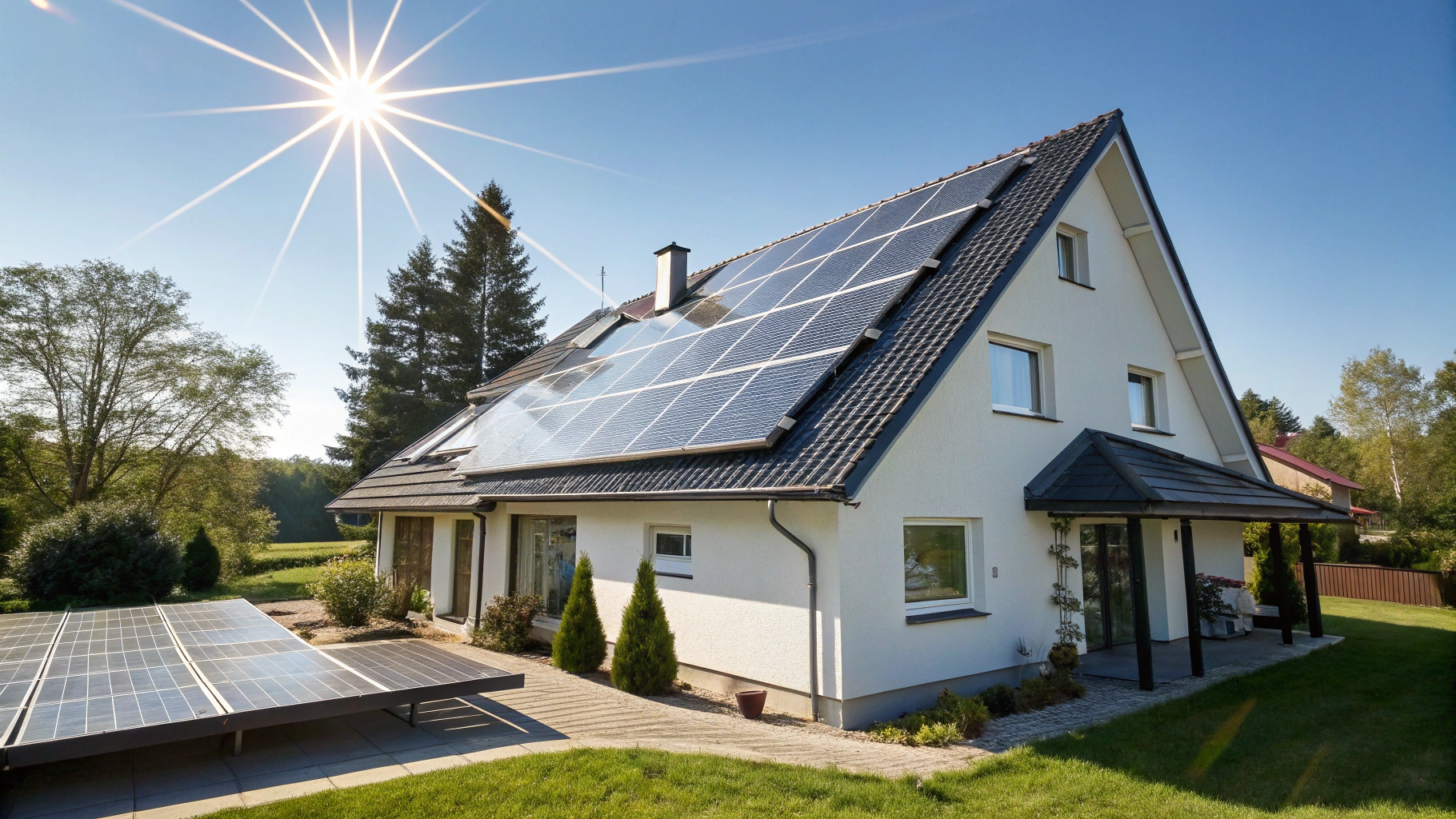
When I made the decision to install solar panels on my roof, I found myself immersed in a labyrinth of choices and factors demanding careful consideration. Embarking on this journey of energy efficiency was a complex endeavor—one that propelled me to fervently share my experiences to aid others who seek to traverse a similar path.
Initially, my understanding of the impact of solar panel efficiency was almost non-existent. However, it quickly became evident that high-efficiency solar panels possess the remarkable ability to convert more sunlight into electricity, thus allowing for significant long-term savings. It truly was a case of killing two birds with one stone! Additionally, choosing the right type of solar panel—whether monocrystalline, polycrystalline, or thin-film—proved to be crucial in meeting my energy requirements. By thoroughly analyzing their respective advantages and disadvantages, I was able to pinpoint the ideal option that aligned with both my budget and sunlight exposure.
The durability and cost of solar panels also emerged as pivotal considerations. I recognized that while the initial installation might present a substantial upfront cost, investing in quality panels paired with an extensive warranty could assure me peace of mind for years to come.
Drawing from the lessons I've learned, I aspire that this blog serves to illuminate the path for others, offering guidance through my own tangible experiences. If you’re contemplating the installation of solar panels, you might discover that my insights provide both inspiration and practical assistance in your planning process. Trust me, making the right choice in a solar system can radically transform the way you harness energy. Embark on these steps, and I have no doubt that you too will witness satisfying results.
Choosing the Right Solar Panels: A Personal Insight
Have you ever felt overwhelmed by the myriad choices in solar panels? I certainly did when I decided to install them on my roof. The key takeaway is that selecting high-efficiency solar panels leads to substantial long-term savings and a better energy output. Understanding the different types—monocrystalline, polycrystalline, and thin-film—was crucial to aligning my needs with my budget and sunlight exposure.
| Type of Solar Panel | Efficiency | Cost | Durability |
|---|---|---|---|
| Monocrystalline | High | Higher | Very Durable |
| Polycrystalline | Medium | Moderate | Durable |
| Thin-Film | Lower | Lowest | Less Durable |
High-efficiency solar panels convert less sunlight into electricity.False
This statement is false; high-efficiency panels actually convert more sunlight.
Investing in quality solar panels can provide peace of mind long-term.True
This statement is true; quality panels and warranties assure long-term durability.
Understanding Sunlight Availability
Harnessing solar energy stands as a cornerstone for both growth and energy optimization. The interplay of sunlight availability critically shapes solar panel efficiency, as geographic patterns orchestrate seasonal fluctuations. In bustling urban environments, accessing optimal sunlight can prove daunting; however, employing sophisticated sunlight optimization strategies facilitates the maximization of solar radiation. Grasping nuances of sunlight duration and intensity is imperative. The role of sunlight in plant vitality is profound—therefore, meticulously measuring and amplifying sunlight access enhances not only growth but also our overall living experience, marrying nature's bounty with innovative methodology.
Sizing and Quantity Estimation
In the realm of construction, precise measurement of sizes and quantities holds paramount significance. Harnessing innovative estimation techniques not only bolsters resource efficiency but also curtails waste. Rely on esteemed software for meticulous size computations, as precision in quantity forecasting becomes indispensable. Integrating sizing methodologies with material specifications yields a holistic approach to quantification. Moreover, adept estimation tools facilitate exact resource allocation, amplifying the accuracy of your project’s material assessment. Embrace these transformative practices to streamline your construction endeavors seamlessly.
Evaluating Panel Efficiency and Placement
Assessing the efficacy and strategic placement of solar panels is indispensable for optimizing renewable energy solutions. Grasping the nuances of efficiency evaluation is vital, as it directs the implementation of best installation practices. The sophisticated endeavor of optimal panel configuration necessitates a meticulous analysis of placement strategies to achieve peak performance. Engaging in an exhaustive efficiency appraisal allows for the true maximization of solar panels. Embrace strategic configurations to amplify energy outputs, enhancing solar energy evaluations and ultimately elevating the overall efficacy through judicious positioning.
How to Properly Install and Connect the System?
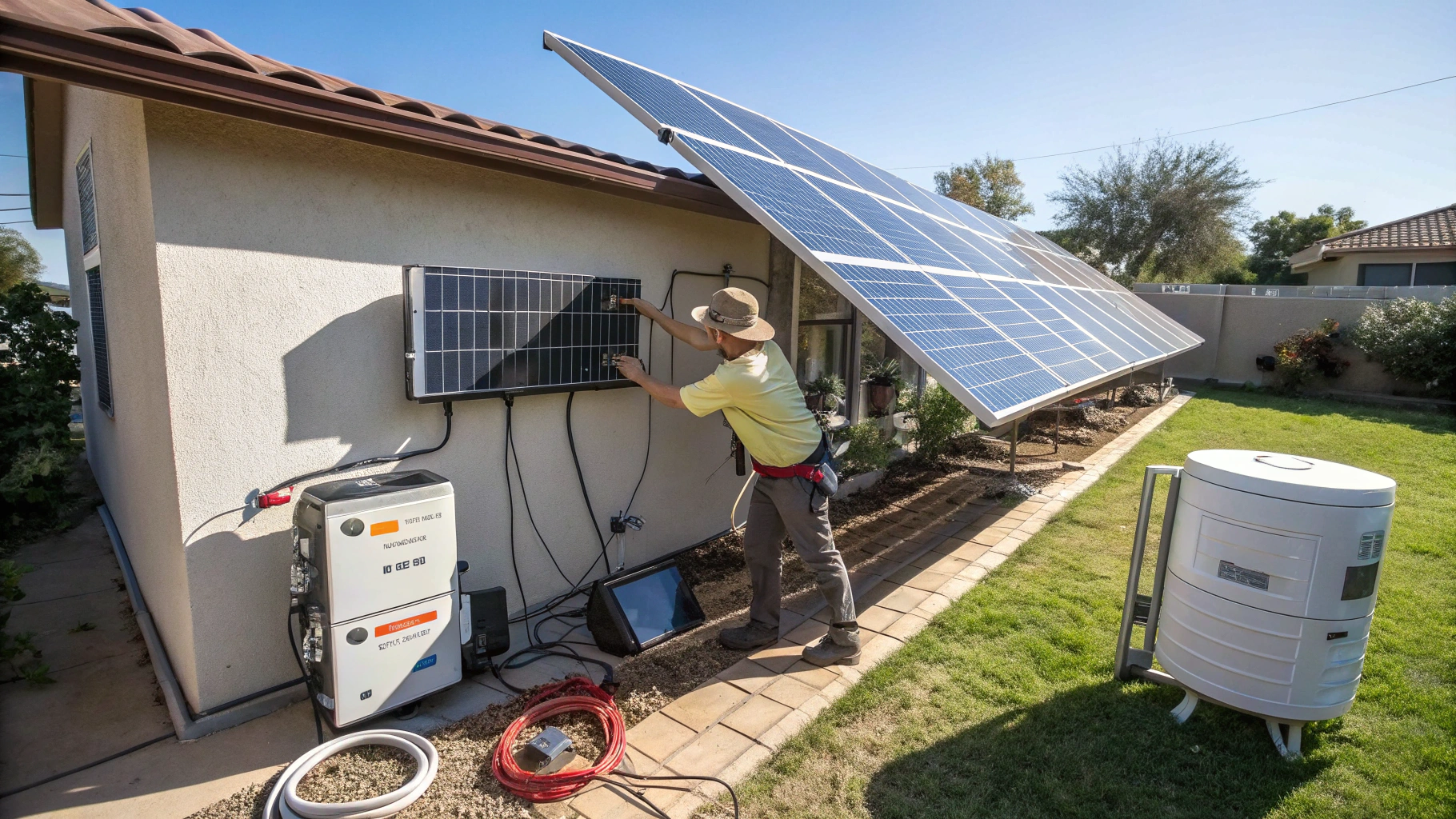
When I embarked on my adventure of building my very own solar power generation system for the first time, I must admit, a wave of uncertainty washed over me. Staring at a myriad of components alongside an instruction manual, I found myself questioning whether I had the capability to successfully piece everything together. Yet, as time elapsed and with diligent research, I gradually learned how to methodically assemble those seemingly disparate parts into a cohesive and efficient system. From verifying hardware compatibility to ensuring accurate connections, each step emerged as a crucial piece of the puzzle.
Acquiring the knowledge to install and link together these hardware elements, coupled with a deep dive into how to set up the system correctly and conduct initial tests, transformed the entire process into a structured and manageable undertaking. If you find yourself, much like I did, feeling a bit flustered at the onset, I wholeheartedly recommend thorough preparation before diving in. Double-check the compatibility of your components and attend to your BIOS settings diligently. Following detailed system installation guidelines will ensure that every connection is both secure and dependable. Whether you are an IT enthusiast or a novice DIYer, sticking to these guidelines will empower you to navigate any challenges that may arise with confidence and poise.
When installing a solar power system, the key lies in meticulously checking hardware, adjusting BIOS settings, correctly connecting each component, and adhering to the installation steps for the operating system. I have faith that if you follow this advice, you too can triumph in building your solar power generation system. I am eager to witness your progress! Give it a go; it might turn out to be easier than you ever imagined.
Essential Steps for Installing and Connecting Your Solar Power System
Have you ever felt that sinking feeling of uncertainty when starting a new project? I certainly did when I set out to build my own solar power generation system. It was crucial for me to learn about the installation process—checking hardware compatibility, adjusting BIOS settings, and ensuring secure connections. The key to success in installing a solar power system lies in meticulously checking hardware, adjusting BIOS settings, correctly connecting each component, and adhering to the installation steps for the operating system. With careful preparation and following the guidelines, you can navigate the setup process with confidence.
| Step | Description | Importance |
|---|---|---|
| Check Hardware Compatibility | Ensure all components are suitable to work together. | Prevents installation issues and ensures performance. |
| Adjust BIOS Settings | Access BIOS to configure settings for the installation. | Optimizes system performance and stability. |
| Connect Components | Link all hardware properly according to guidelines. | Ensures reliable operation of the system. |
| Follow Installation Steps | Adhere to the detailed installation guidelines for the OS. | Facilitates a successful and smooth installation process. |
Installing a solar power system requires random hardware checks.False
False. Hardware compatibility must be checked meticulously to ensure success.
Following installation guidelines helps secure reliable system connections.True
True. Adhering to guidelines ensures correct connections and system performance.
Steps for Solar Panel Installation
Venturing into the realm of residential solar panel installation demands meticulous attention to detail. Initiate your journey by delving into a comprehensive guide that elucidates the sequential steps of this process. Assess your specific needs judiciously; the efficacy of the installation hinges on a thorough site evaluation. Explore diverse mounting techniques customized for rooftop configurations. While contemplating a DIY approach for its economical advantages, don’t overlook crucial safety protocols. Acquaint yourself with requisite installation procedures, ensuring adherence to regulations. Ultimately, consider enlisting the expertise of seasoned professionals to harmonize installation expenses with the enduring advantages of solar energy.
Connecting All Components Safely
In the modern technological milieu, the sanctity of secure electrical connections cannot be overstated. Prioritizing exemplary practices for component integration adheres not only to safety standards but also alleviates prospective risks. By weaving together safe wiring techniques with dependable connection methodologies, one can achieve both efficacy and durability in electrical apparatus. The conscientious handling of components, paired with robust connection strategies, cultivates a secure operational ambiance. Consistently observe safety protocols to fortify component integration, and champion electrical safety to avert missteps—ensuring that the essence of secure connections remains paramount in every pursuit.
Conducting Final Safety Checks and Testing
The utmost importance of final safety evaluations cannot be overstated. Before any launch or deployment, executing a meticulous safety inspection checklist is essential for ensuring compliance. Our dedicated team conducts rigorous safety testing, seamlessly blending final assessments with quality assurance protocols. Pre-departure assessments involve exhaustive equipment verifications, requiring precise testing methods and operational safety audits. Comprehensive safety validation techniques guarantee the fulfillment of all safety protocols. Armed with risk management evaluations, our concluding testing methods affirm compliance with stringent safety benchmarks, making compliance testing a vital, integral safeguard woven into our operational fabric.
Conclusion
In summary, building a solar power system offers both challenges and rewards. Throughout this journey, we explored the essential components—solar panels, charge controllers, inverters, and batteries—that are pivotal to harnessing solar energy. It is evident that meticulous planning and understanding your energy demands are crucial for the successful installation of a solar system, allowing you to create a sustainable energy source for your home.
As we have discovered, the right selection and integration of these components can yield significant long-term benefits, not only in terms of energy efficiency but also in reducing your carbon footprint. I encourage you to take action—begin your solar energy journey by assessing your energy needs, exploring the types of solar panels and batteries available, and considering safety measures for installation. Together, let’s embrace a greener future through renewable energy!


